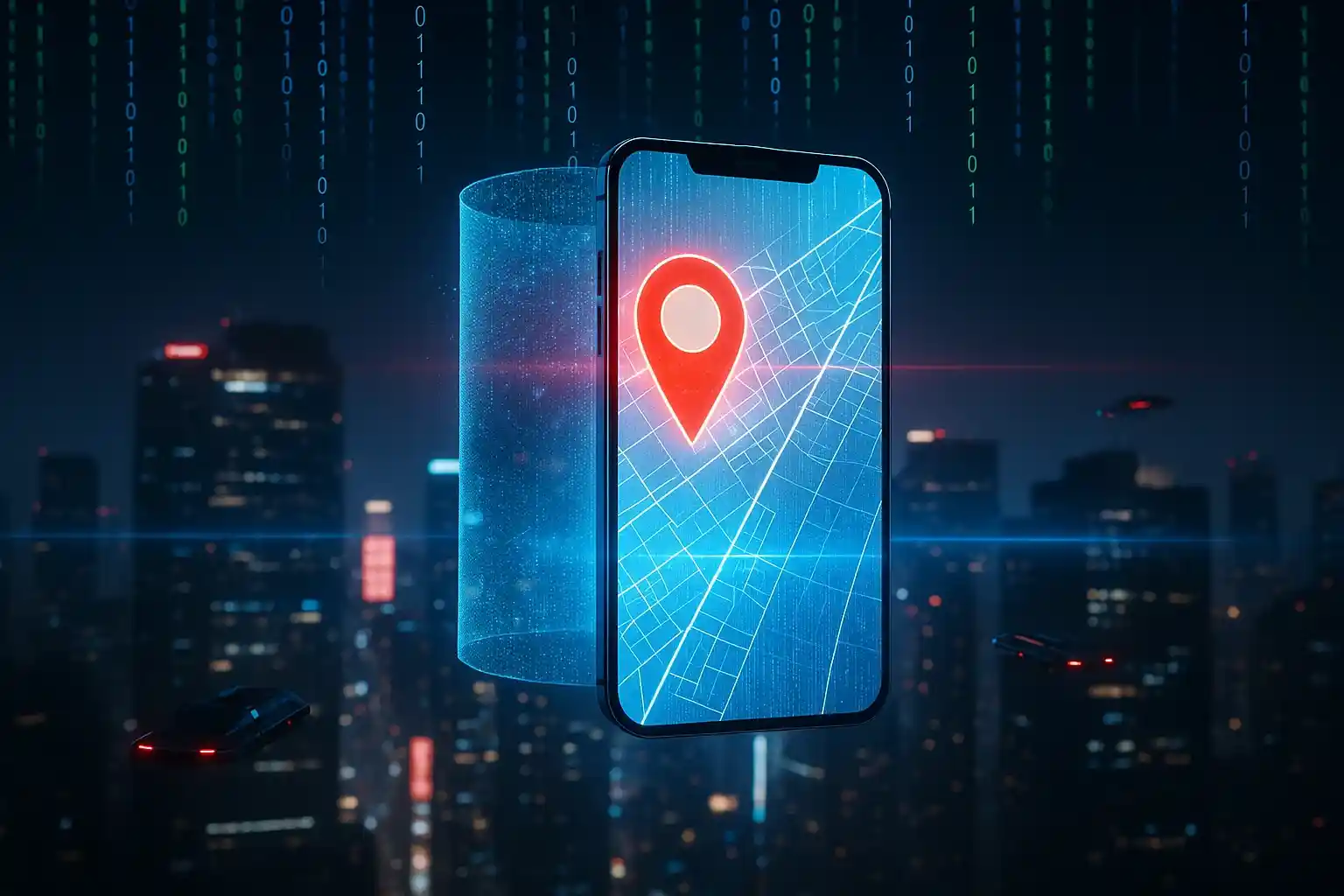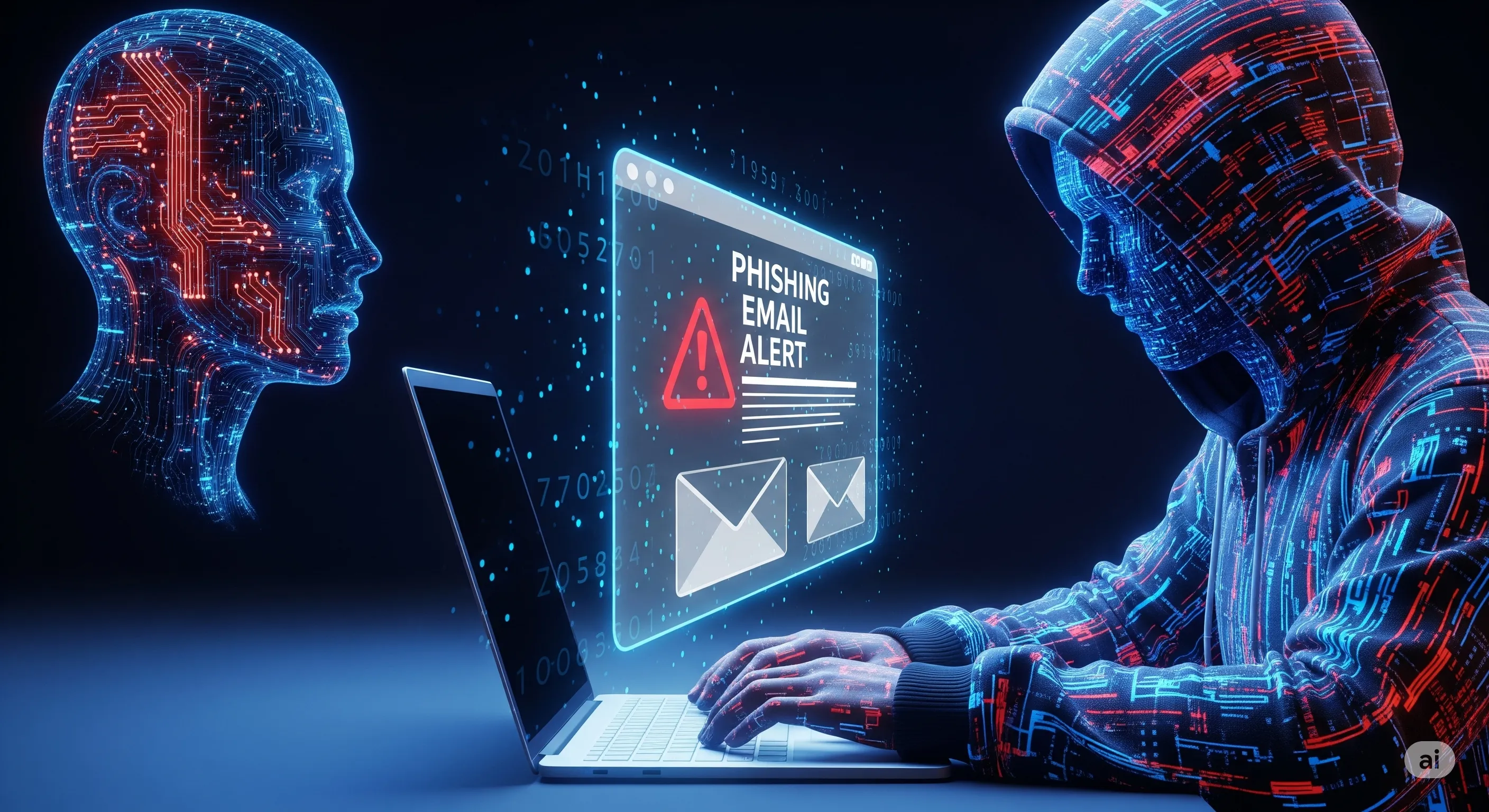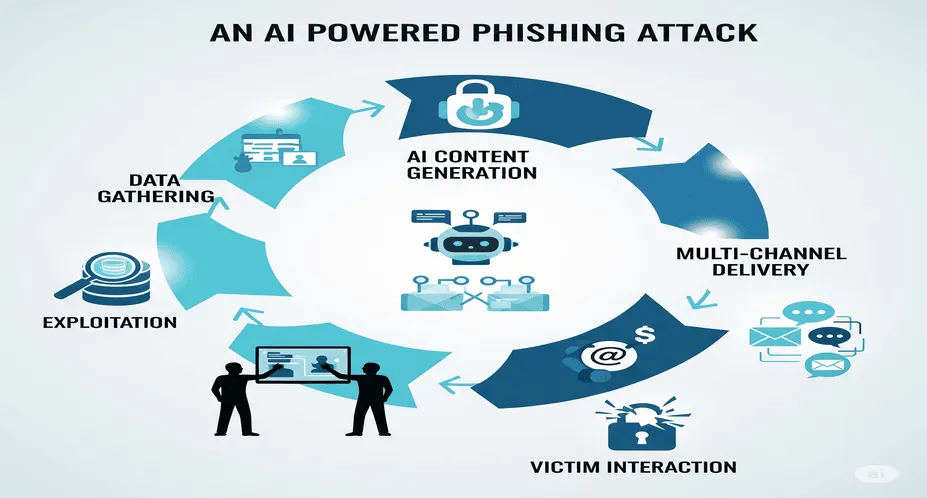AI Phishing: The Future of Social Engineering
Published on: August 13, 2025 |
Author: Bibek Singh
Introduction: The Rise of AI-Driven Cyber Threats
Phishing has been a threat for decades, but the emergence of AI-powered phishing has changed the cybersecurity landscape. Unlike traditional scams, AI-driven attacks are highly personalized, sophisticated, and harder to detect.
From deepfake audio mimicking executives to AI-generated social media messages, attackers are exploiting human trust like never before. Understanding these threats is essential to safeguarding your organization and personal accounts.
What is AI-Powered Phishing?
Traditional phishing often relies on mass emails with mistakes or suspicious links. In contrast, AI-powered phishing uses advanced technologies like:
- Natural language processing to generate realistic messages
- Deepfake audio and video to impersonate trusted individuals
- Automated reconnaissance to collect detailed personal and organizational data
This allows attackers to craft messages that feel genuinely trustworthy, dramatically increasing the success rate of scams.
AI Tools Behind Modern Phishing
Cybercriminals leverage several AI tools:
- Generative Language Models – Craft flawless, personalized messages for any audience.
- Deepfake Audio & Video – Clone voices and generate realistic synthetic video calls.
- Automated Data Mining – Scrape social media to gather insights and tailor content or attacks.
- Behavior Prediction – Use AI to determine the optimal timing and approach for maximum impact.
By combining these technologies, attackers can scale highly targeted attacks across email, social media, and messaging platforms.
Real-World Examples of AI-Powered Phishing
1. CEO Wire Transfer Scam (2025): A finance team was tricked by a deepfake voice requesting $4.5 million.
2. LinkedIn Credential Theft: AI-generated messages targeted HR professionals to steal login credentials.
3. Multi-Channel AI Phishing: Attackers combined emails, SMS, and video calls to trick victims into revealing sensitive information.
These examples illustrate the practical dangers of AI-driven phishing, emphasizing the need for proactive defenses.
Why AI Phishing is So Dangerous ?
- Flawless Execution: No grammar errors or suspicious phrasing
- Highly Personalized: Messages are tailored for each recipient
- Multi-Channel: Combines email, calls, and video for maximum impact
- Rapid Scale: Thousands of unique, targeted attacks can be deployed automatically
Even cybersecurity-savvy employees can be fooled, which makes employee training and verification protocols critical.
How to Protect Yourself and Your Organization
- Enable multi-factor authentication (MFA) on all critical accounts
- Use AI-based phishing detection tools to catch subtle anomalies
- Deploy deepfake detection software for verifying audio/video
- Conduct simulated AI phishing campaigns to test employee readiness
- Train employees to recognize social engineering attacks
- Foster a culture of verification before sharing sensitive information
3. Verification Protocols:
- Use out-of-band confirmations for financial requests
- Require multiple approvals for sensitive transactions
- Establish strict handling guidelines for sensitive data
The Future: AI vs. AI in Cybersecurity
Attackers are using AI offensively, but defenders can leverage AI defensively:
- Behavioral Anomaly Detection: Identify unusual patterns in email, login, or network activity
- Threat Hunting Automation: AI can proactively scan for vulnerabilities and compromised accounts
- Deepfake Verification Tools: Detect AI-generated video and audio impersonations
Organizations that adopt these AI-driven defenses will stay ahead of attackers and mitigate risks faster.
AI-powered phishing represents a major shift in cyber threats. With AI-generated emails, deepfake audio, and social engineering attacks, organizations and individuals are at greater risk than ever. By implementing advanced technical defenses, training staff, and establishing robust verification processes, you can mitigate these threats effectively.
At CiphreX Labs, we provide guidance, training, and tools to defend against AI-driven phishing attacks. Protect your organization today and stay ahead of cybercriminals.
FAQ: Everything You Need to Know About AI-Powered Phishing
- AI phishing is the use of artificial intelligence to create highly personalized, convincing scams through email, social media, or messaging apps. Unlike traditional phishing, AI phishing can imitate voices, writing styles, and even video appearances.
Q2: How do attackers use AI to hack social media?
- Attackers collect personal information from public social media profiles, then generate messages or posts that appear to come from trusted connections. This increases the likelihood that victims click on malicious links or share sensitive data.
Q3: Are AI phishing attacks more dangerous than traditional phishing?
Yes. AI phishing attacks are more sophisticated, personalized, and multi-channel. They exploit human trust and are harder for both users and security systems to detect.
Q4: How can organizations prevent AI-powered phishing?
- Use technical defenses like AI-based detection tools, deepfake verification, and MFA. Combine these with employee training, simulated phishing campaigns, and strict verification protocols.

Discover how hackers, apps, and websites track your exact location through your IP, GPS, and photos.…

Learn how to bypass firewalls for security testing. Step-by-step guide with Nmap, SSH tunneling, DNS…

Discover Cursor AI – the ultimate AI-powered code editor built on VS Code. Generate, debug, and opti…


